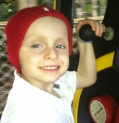Dissecting Pediatric Brain Tumour Progression Using Single-nuclei Sequencing

Lay Summary: Brain cancer is the most common cancer in children. While treatments with chemotherapy and radiation can be effective initially, brain tumors often come back and are resistant to further treatment. To understand what happens at the cellular level between initial diagnosis and cancer recurrence, we will study these cells at both timepoints. While past research has focused primarily on cancer cells, we will also study the non-cancerous cells that inhabit brain tumors that may contribute ingredients that cancer cells need to grow. By comparing cancerous and non-cancerous cells before and after treatment, we expect to find specific relationships between these cells that allow tumors to regrow after surgery and radiation. By sharing these data with the scientific community through the Single-cell Pediatric Cancer Atlas, we will have greater power to understand cancer/non-cancer cell relationships, compare these to normal relationships between healthy brain cells, and to nominate treatments that can treat or even prevent the return of cancer after initial treatment.
Lay Summary Project Goal: Our goal is to enable a data-driven approach to select targeted drugs that kill all cancerous and cancer-supporting cells within a child's brain tumor. To allow this type of testing to happen, we must first understand what genetic changes allow a brain tumor to regrow, and what other cells in the brain may also contribute to this regrowth. To understand this dynamic, we will analyze 10,000 cells from 20 children with brain cancer before treatment and at relapse. All data will be shared through multiple cloud-based pediatric cancer data systems, including the Single-cell Pediatric Cancer Atlas. This approach will give us insight into how cancers can become resistant to treatment. It will also allow us to continue to refine our models for predicting combination therapies that may target both aspects of childhood brain tumors: the cancer cells and the supporting immune cells.

